And probably will be tested on board by 2024 and we can see the missile's concept by this year if the Navy is not being stingy. Now it explains why Navy was keen on having spot for 16 AShM launcher on I-Class and TF-2000.Mr Varank: "Next year we will be able to test our RamJet engines in our own infrastructure in onboard tests with missiles.”
Latest Thread
You are using an out of date browser. It may not display this or other websites correctly.
You should upgrade or use an alternative browser.
You should upgrade or use an alternative browser.
This is great news. Finally we are breaking the dependency of our airforce from US when it comes to BVR AMRAAM missiles.Gökdogan launched from F16
Both Gokdogan and Bozdogan are expected to start serial production soon.
And probably will be tested on board by 2024 and we can see the missile's concept by this year if the Navy is not being stingy. Now it explains why Navy was keen on having spot for 16 AShM launcher on I-Class and TF-2000.
If I remember correctly, this target was first implicitly published in the SSB 2017-2021 strategy document. Today, this document was renewed with up to date versions. Looking carefully at the expressions in that text, it was clear that SSB was pointing very unique naval strike capability and I shared this in past. In that text, basically two different naval attack missiles were mentioned which were developed according to two different threat situations. It was mentioned that one would pass the qualification trials (Atmaca-planned 2018) and that the preliminary design work for the other one is ongoing. While there was a statement that "it will have enhanced strike capability" for the missile which is still in preliminary design phase, the "basic strike system" (Atmaca) words was selected for the missile that would enter the inventory soon. I think that Turkey will soon equip its warships with very effective subsonic and supersonic naval strike missile systems and will be among the countries that use the saturation strike concept most effectively with these missiles that can be launched from land, ships, air and even underwater. When this concept is completed, it will not be possible for any country to act as it wishes in Turkish waters and beyond with warships in times of crisis.
• Başlıca deniz tehdit unsurlarına karşı temel taarruz yeteneğine sahip füze sisteminin kalifikasyonu tamamlanacaktır
• Gelişmiş deniz tehdit unsurlarına karşı arttırılmış taarruz yeteneğine sahip füze sisteminin ön tasarım aşaması tamamlanacaktır.
This is important and ground breaking for our Ramjet development efforts. Liquid ramjet work’s natural next step is scramjet. This work will lead itself to our local Brahmos-1 (ramjet powered supersonic) & Brahmos-2 (scramjet powered hypersonic) missiles.Mr. Varank: "Using our already established test infrastructures, we have carried out invaluable work in the development of a liquid fuel RamJet engine in a short time. The point we have reached in a short time in terms of liquid fuel RamJet engines in the project we are carrying out encourages us to become one of the few countries in the world in liquid fuel RamJet engine and, in the future, ScramJet engine technologies.
On the one hand, while continuing the development work on the existing infrastructures, on the other hand, our efforts to establish the infrastructure where we can perform RamJet engine tests and aerodynamic warm-up tests continue at full speed. When its installation is completed, the related infrastructure will be one of the largest in Europe.”

Varank'tan Sıvı Yakıtlı RamJet Açıklaması | SavunmaSanayiST
Sanayi ve Teknoloji Bakanı Mustafa Varank, Sıvı Yakıtlı RamJet Motor Projesi ile ilgili önemli açıklamalarda bulundu. Varank, motorun süpersonik hızlarda çalışacağını vurguladı.www.savunmasanayist.com
However the local meteor missile we are all expecting to see is not mentioned yet. For that we need solid fuelled ramjet engine. It is also a throttleable engine that allows it to have different speeds during it’s flight. This is quite a different technology and I am not sure if we are even working on it.
Yet Mr Akar did mention about our “Gökhan” ramjet a2a missile. So there is a Ramjet powered a2a missile to come out yet.
And probably will be tested on board by 2024 and we can see the missile's concept by this year if the Navy is not being stingy. Now it explains why Navy was keen on having spot for 16 AShM launcher on I-Class and TF-2000.
Thinking out loud. Assuming Ramjet-Antiship missile could look similar to Hsiung Feng III. Atmaca length is ~4.8-5.2 and 350mm diamater. Hsiung Feng II is 4.8 with booster and 400mm diameter. Feng II and III next to each other for comparison.
G-Class, Barbaros MLU, Ada-class should allow twin Ramjet, twin Atmaca config if wanted
I-Class and TF-2000 should have space enough for quad setup.
T
Turko
Guest
I'd prefer copy operational The French liquid fuel ramjet air-to-ground missile with mach 3 speed and 500km range.This is important and ground breaking for our Ramjet development efforts. Liquid ramjet work’s natural next step is scramjet. This work will lead itself to our local Brahmos-1 (ramjet powered supersonic) & Brahmos-2 (scramjet powered hypersonic) missiles.
However the local meteor missile we are all expecting to see is not mentioned yet. For that we need solid fuelled ramjet engine. It is also a throttleable engine that allows it to have different speeds during it’s flight. This is quite a different technology and I am not sure if we are even working on it.
Yet Mr Akar did mention about our “Gökhan” ramjet a2a missile. So there is a Ramjet powered a2a missile to come out yet.
Before Brahmos The French had already armed them.
ASMP (Air-Sol Moyenne Portée) - France Nuclear Forces
I'd prefer copy operational The French liquid fuel ramjet air-to-ground missile with mach 3 speed and 500km range.
Before Brahmos The French had already armed them.
View attachment 34959
ASMP (Air-Sol Moyenne Portée) - France Nuclear Forces
www.globalsecurity.org
ASMP is not designed for conventional use. Brahmos design wise bigger but far flexible, it can accommodate booster, allowing to be launched from various platforms. Can be used both for conventional and nuclear use.
E
Era_shield
Guest
The video in the tweet is from April.Gökdogan launched from F16
After Gökdoğan BVRAAM missile, SOM-J is also test launched from an F-16.

First Live Fire Test with SOM-J 5th Generation ASuW Missile Held in October
The first live fire test was successfully carried out in October with the SOM-J 5th Generation ASuW Missile developed by TÜBİTAK SAGE. The shooting was carried out with the F-16C Aircraft, affiliated to the 401st Test Fleet Command, off the coast of Bartın. The launch was scheduled for September 2021 against a naval target, weather permitting, but was later delayed to October.
The Defense Industry Presidency (SSB) and the Main Contractor started the development work of the 5th Generation SOM-J Missile, which is primarily designed to be used against fixed and moving surface targets (ASuW), but can also be used against heavily protected land targets. It was started under the F-35 MTU/JSF Compatible Precision Guided Smart Missile Design, Development and Prototype Production Project Agreement signed between ROKETSAN. The design, development, prototype production, testing and platform integration activities of the SOM-J Missile are carried out by TÜBİTAK SAGE, the design responsible, while the promotion/marketing and mass production activities are under the responsibility of ROKETSAN.
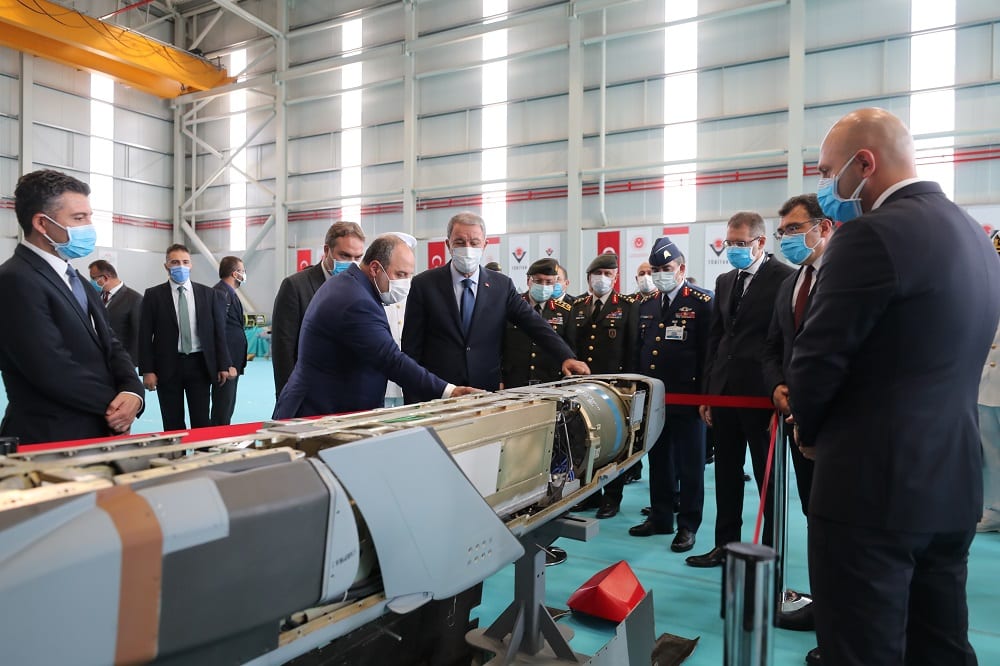
With test ammunition in the SOM-J Program, which passed from sub-system level tests to system level tests in 2017, Captive Carrying and Safe Ammunition Release/Separation Test was carried out at Sinop Shooting Test Site in July 2018 and Environmental Conditions and Ground Tests were completed in October 2020. flight tests have been going on for some time. In this context, in the first half of 2021, the F-16C Aircraft SOM-J KTM-2, affiliated with the 401st Test Fleet Command (KTM code refers to the prototype code of the Mass Equivalent Test Ammunition with special measurement systems for data collection during transport attached to the aircraft) While being displayed during the flight, in the images shared in the news of the 401st Test Fleet Command visit by TRT Haber on social media on September 5, 2021, in addition to the SOM-J KTM-2 ammunition, the SOM-J ITM-2 (Enhanced TR40 Turbojet) It has an engine, the ITM code refers to the prototype code of the Functional Test Ammunition, which has the same systems as the tactical system except the warhead and has special measurement systems for data collection during flight tests) also attracted attention.
Although Turkey was expelled from the F-35 Joint Strike Fighter Program in July 2019, the SOM-J Project did not stop and work continued with the aim of conducting the first elephant fire test from a TurAF F-16 by the end of 2021.
Powered by the Developed TR40 Turbojet Engine (in time, it is aimed to localize the engine on the SOM-J, and I am waiting for the development of a version of the KTJ-3200 suitable for SOM-J), with a high subsonic speed, the SOM-J is approximately 3.9m long and It weighs 540kg and can reach a range of 275km+ (150nm+). Equipped with a particle-effect armor-piercing warhead weighing approximately 140kg, the SOM-J Missile uses an IIR (Infrared Imager) seeker (with MCT-based cooled MWIR detector). Meanwhile, within the scope of the recently completed product development studies, it is stated that a significant reduction in weight has been achieved thanks to the use of composite material in the SOM-J body. While it is stated that the results of these studies have been approved, we do not currently have clear information on whether the Modified SOM-J design will turn into a product. With its lightweight body and turbojet engine with closed-loop lubrication system, a significant range increase will be possible in the Modified SOM-J compared to the standard version.
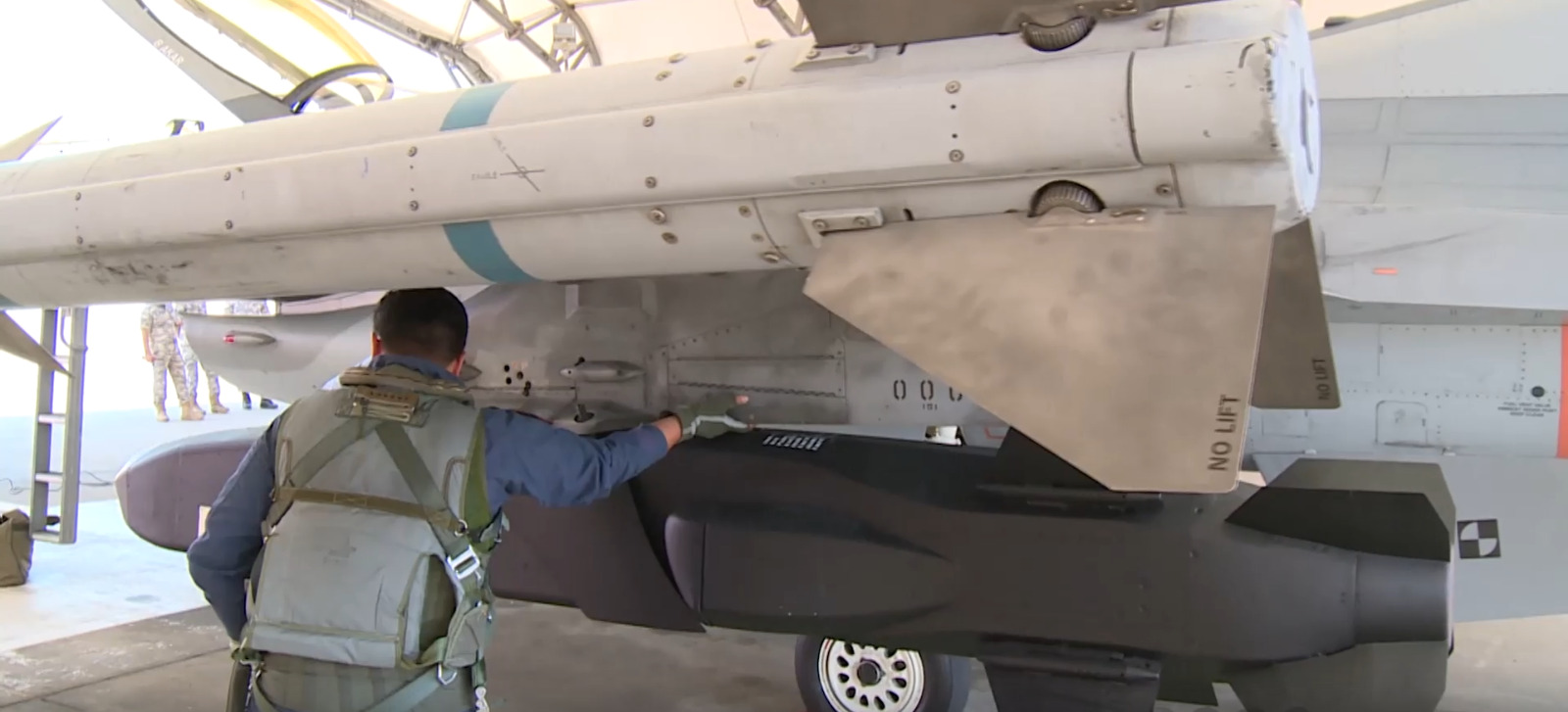
SOM-J Missile, which is stated to have Low Radar Cross Section (RCS) value, has the same guidance system as SOM-B1 (INS/GPS, Earth Reference Navigation System [TRNS], Image Referenced Navigation [IBN] System and Automatic Target Detection [ OHA/ATA]) but will have a more advanced/precise OHA/ATA capability and a bidirectional Link-16 Tactical Data Link System (giving capabilities such as target update during flight, engagement of opportunity targets, and mission cancellation). In addition to tactical data link systems, the SOM-J Missile is designed to be compatible with the Intelligent Weapon Network (ASA) developed by TÜBİTAK SAGE. In this way, sharing missile information after firing, tracking and control of the missile by control platforms, operator-assisted targeting and control capability using seeker images, joint operations capability with a network to be established between weapon systems are provided.
It was announced that the SOM-J Missile was planned to be integrated into TUSAŞ product AKSUNGUR and BAYKAR DEFENSE product AKINCI as well as Attack Unmanned Aerial Vehicles (TİHA), and integration studies on AKINCI TİHA were started in the first half of 2021. However, in the current environment, it is not possible to supply the Link-16 Tactical Data Link System with COMSEC status from the USA via FMS and to integrate it with AKINCI or AKSUNGUR TİHAs. Maybe in the future, the integration of KEMENT Tactical Data Link to mass production SOM-J Missiles will be on the agenda, as in the SOM-C1/C2. The KEMENT Tactical Data Link System, which is still being tested on SOM, was previously integrated into an F-16C Block 30 Aircraft as part of the firing tests, and in this context, blade antennas were attached to the cockpit front and back of the aircraft.
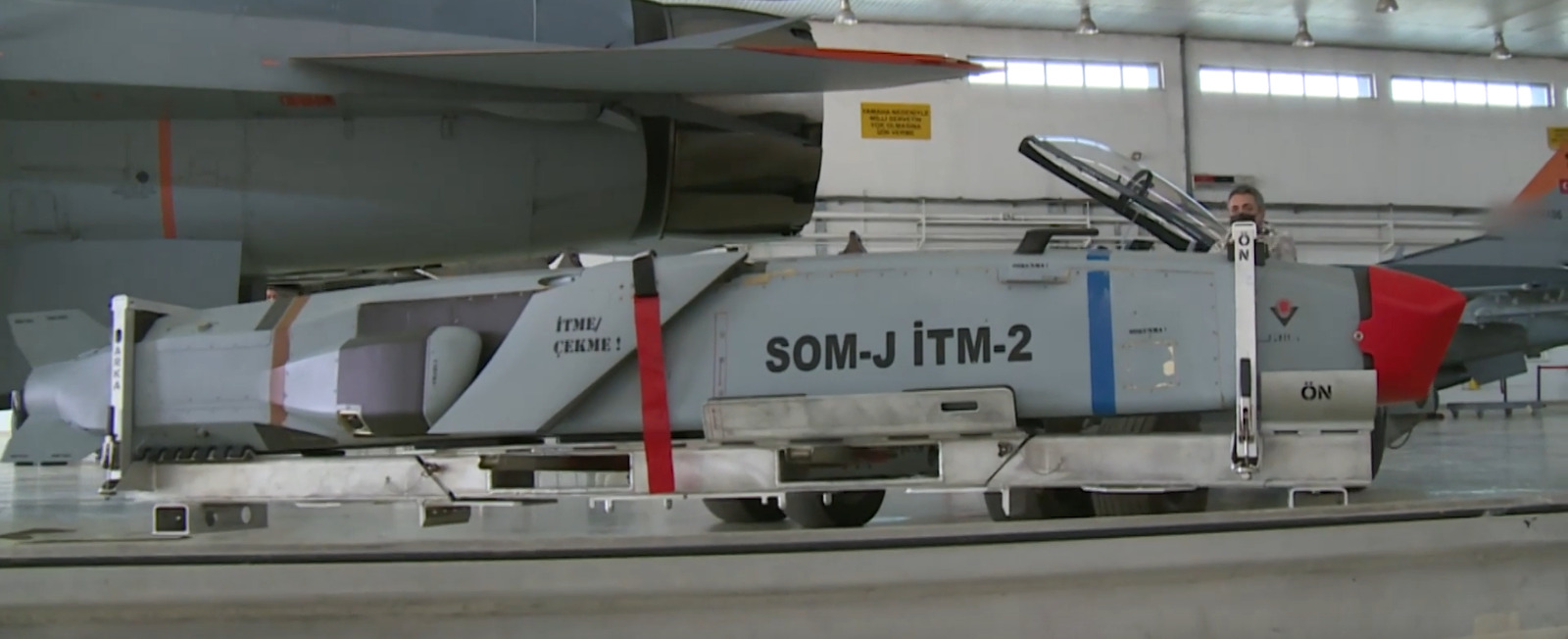
The same aircraft can be used in the SOM-C1/C2 tests as well as in the SOM-J test after KEMENT integration. However, the integration of KEMENT into F-16 models undergoing CCIP represents a serious engineering challenge. The world's leading S/UAV technologies, with the ability to fire cruise missiles that can penetrate deep into the enemy line and direct them to enemy targets by the pilots and payload operators at the Ground Control Station, from AKSUNGUR and AKINCI TİHAs, two of which were declared to be in service as of November. Turkey, one of the countries, will open a new page with the SİHA-Air-Ground Cruise Missile (ALCM) concept.

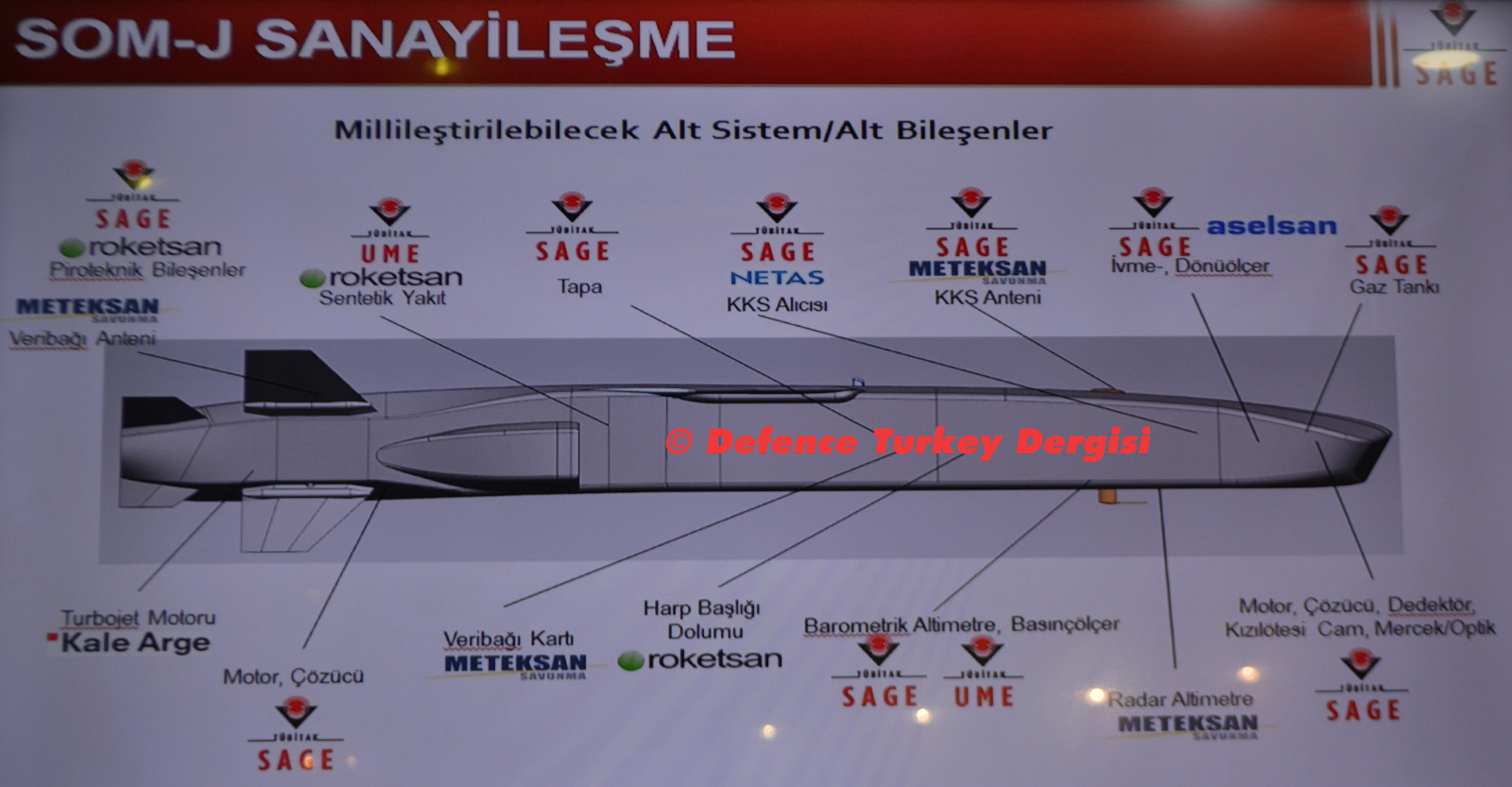
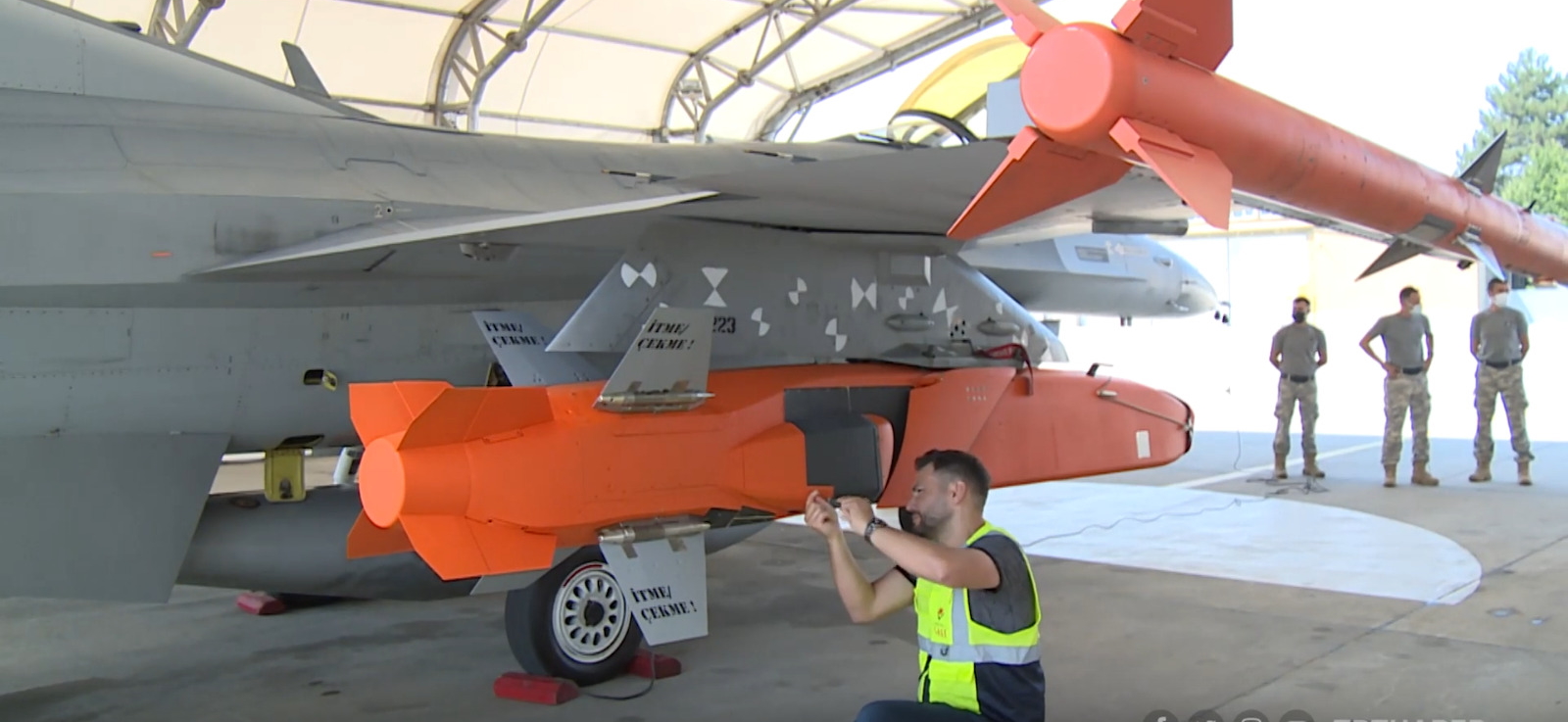
SOM-J 5’inci Nesil ASuW Füzesi ile İlk Canlı Atış Testi Ekim Ayında Yapıldı!
TÜBİTAK SAGE tarafından geliştirilen SOM-J 5’inci Nesil ASuW Füzesi ile ilk canlı atış testi Ekim ayı içinde başarıyla icra edildi. Atış 401’inci Test Filo Komutanlığı bağlısı F-16C Uçağı ile Bartın açıklarında icra edildi. Atışın hava şartlarının uygun olması durumunda bir deniz hedefine karşı...
 www.defenceturkey.com
www.defenceturkey.com
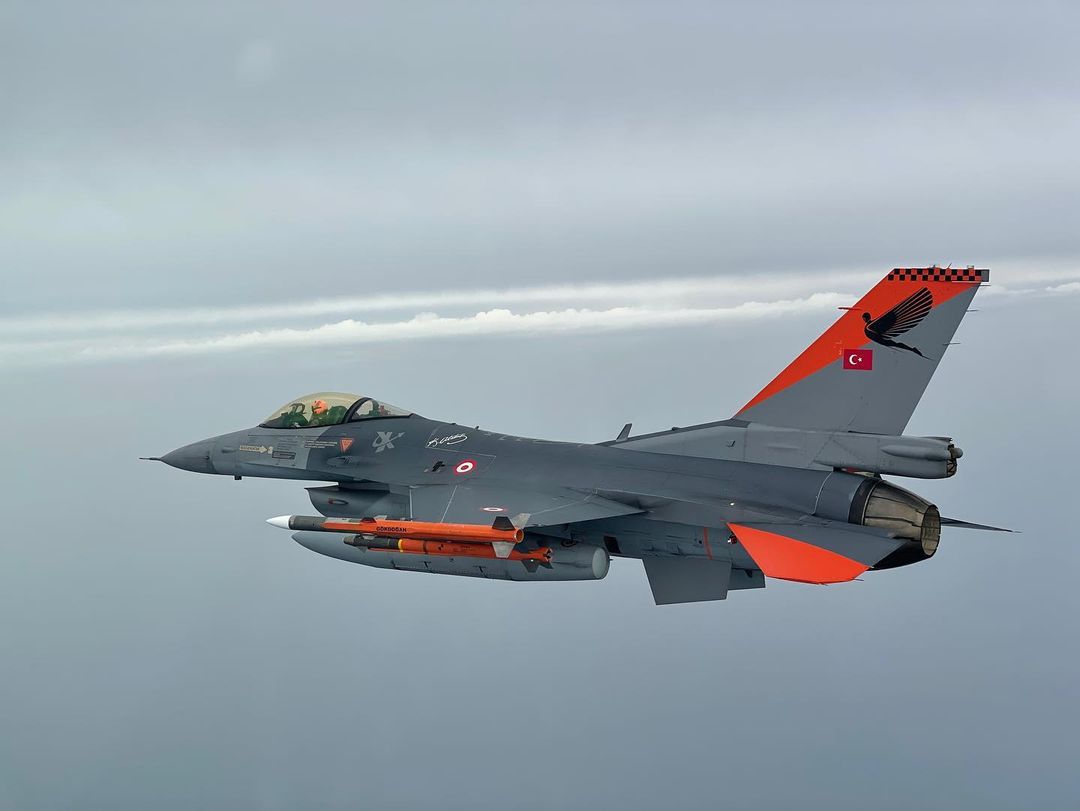
GÖKDOĞAN BVR Missile Firing Test Performed Successfully at the End of October
Turkey's first active radar (RF) guided infra-sight (BVR) air-to-air missile GÖKDOĞAN, developed by TÜBİTAK SAGE on behalf of the Presidency of Defense Industries within the scope of the GÖKTUĞ Project in line with the needs of the Turkish Air Force, was successfully carried out at the end of October. Within the scope of the shooting campaign, in which multiple shots were fired, the IIR guided BOZDOĞAN Missile was also fired. A few more shooting campaigns will be carried out in the coming period. GÖKTUĞ Project is expected to be completed in 2022.
As with the IIR guided BOZDOĞAN In-Sight (WVR) Missile, which was previously executed on April 7, 2021, as the target in the GÖKDOĞAN fire performed at the Sinop Firing Test Field with the F-16C Aircraft of the 401st Test Fleet Command, TUSAŞ product ŞİMŞEK High Speed Target Aircraft used.
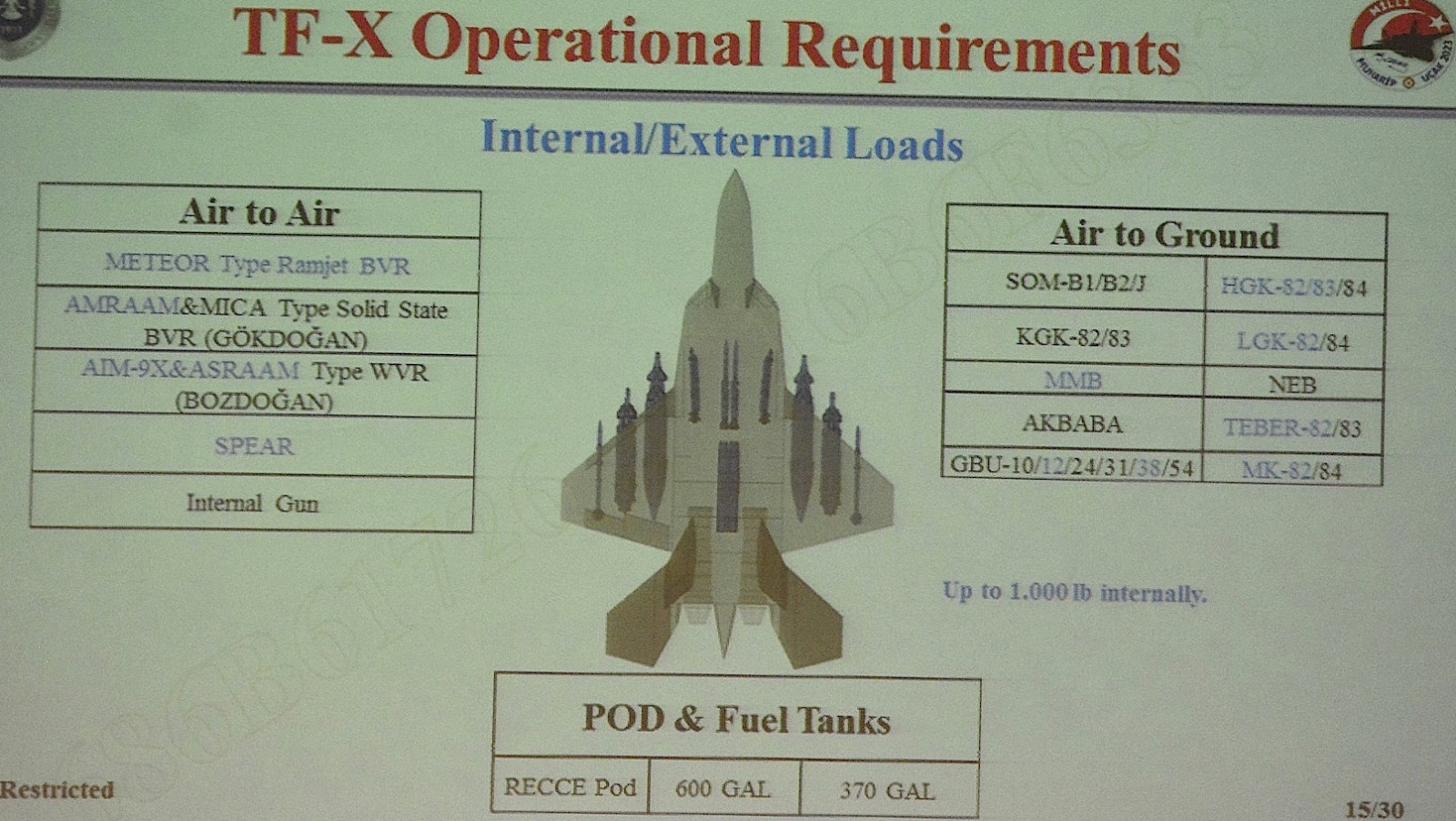
As the details of the firing campaign carried out were not shared with the public as of November 5, 2021, when the news was prepared, the mode in which the GÖKDOĞAN Missile was fired and the level of integration with the AN/APG-68(V)5 Radar (on Block 30 and a few Block 40) on the aircraft. I do not have any information at this time. I do not consider it possible for GÖKDOĞAN's full integration with the AN/APG-68(V)5 Radar on the aircraft, as I consider that the radar-related source codes are not available and the necessary permissions from the US Government cannot be obtained in this environment. On the other hand, since no information has been shared about whether there is an X-Band receiver and the necessary software/algorithms for establishing compatibility with the AIM-120 AMRAAM Missile on GÖKDOĞAN, I cannot make an assessment as to whether the APG-68 is introduced as AMRAAM or not.

The AIM-120 AMRAAM is basically launched in two modes. In the first, information such as the location and speed of the target detected by the APG-68 before the launch is loaded to the missile by the aircraft, and the missile flies towards the previously loaded coordinate, up to a certain distance, thanks to the internal IRU (Inertial Reference Unit) and microprocessor, without activating its own seeker head. With half-track guidance, the update of the target coordinate is transmitted from the aircraft to the missile via the data link, enabling the missile to find its target more precisely. The missile opens its RF seeker head within a certain distance (such as 8-10nm) to the target, searches for the target and locks onto it. This engagement is referred to as the 'pitbull'. In the second firing mode, which is preferred for in-sight distances, the missile finds its target with its own RF seeker head and locks onto it before it is launched from the aircraft. Thus, the need for integration and data link to APG-68 does not arise. Without half-track guidance, the missile's effectiveness in BVR engagement is significantly reduced because the active RF seeker on the missile has a more limited range and power than the APG-68.
In the light of this information, I think that the GÖKDOĞAN Missile is locked on its target with its own active RF seeker in pitbull (autonomous RF guidance, fire and forget) mode and the shot is carried out at an in-sight range. In order for GÖKDOĞAN to be used at maximum range and with higher efficiency, integration with the onboard Fire Control Radar and half-track guidance support are essential. Within the scope of Phase-IV, which is the final stage of the ÖZGÜR Avionic Modernization Project and includes the Sliding Map, Data Link and Air-Air/Air-Ground Weapon Integration works, after the full integration of GÖKDOĞAN into the aircraft, it will be possible to use the missile at maximum range and at maximum efficiency.
The GÖKTUĞ Project, initiated by TÜBİTAK SAGE, aims to develop BOZDOĞAN and GÖKDOĞAN Missiles and electronic training missiles to be used in their training. BOZDOĞAN and GÖKDOĞAN, both air-to-air missiles, are seen as critical in establishing air superiority. While BOZDOĞAN is an in-sight missile, GÖKDOĞAN is an beyond-sight missile.
BOZDOĞAN and GÖKDOĞAN, which are primarily planned to be integrated with F-16 Aircraft, can be used against combat aircraft, large-bodied aircraft, helicopters, unmanned aerial vehicles and cruise missiles. AKINCI and AKSUNGUR, which are planned to be among the ammunition of TİHAs like AKINCI and AKSUNGUR, will also be one of the important weapons of the National Combat Aircraft TF-X/MMU.
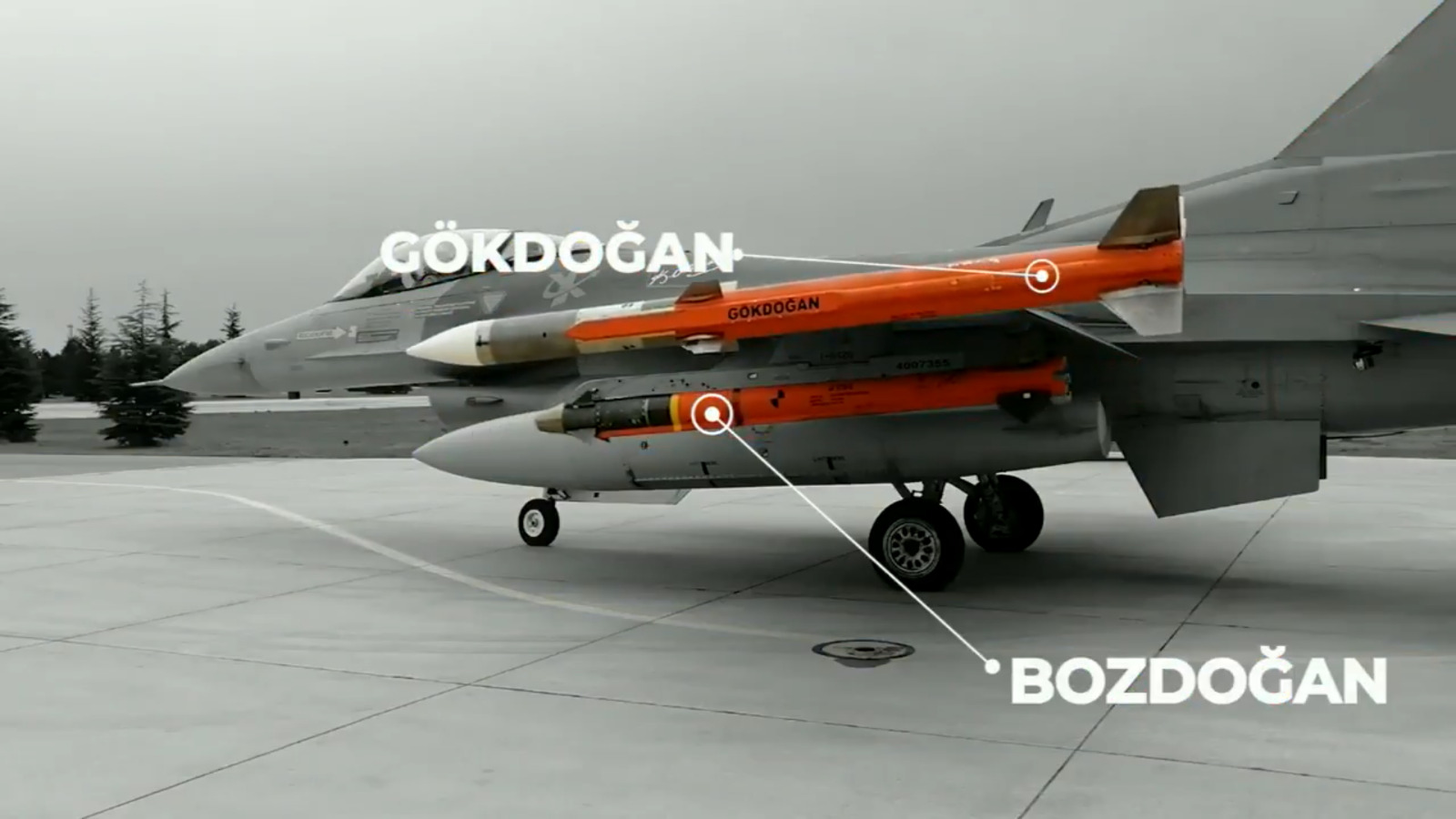
GÖKDOĞAN BVR Füze Atış Testi Ekim Ayı Sonunda Başarıyla Gerçekleştirildi
Savunma Sanayii Başkanlığı adına TÜBİTAK SAGE tarafından Türk Hava Kuvvetleri’nin ihtiyaçları doğrultusunda GÖKTUĞ Projesi kapsamında geliştirilen Türkiye’nin aktif radar (RF) güdümlü ilk görüş ötesi (BVR) havadan havaya füzesi GÖKDOĞAN ile uçaktan ilk atış testi Ekim ayı sonunda başarıyla...
 www.defenceturkey.com
www.defenceturkey.com
In a recent interview Gurcan Okumus of Tubitak-Sage was incessantly asked about our ammunition being compatible with our different blocks of F16s. He was very clear that there is nothing hindering us from using our own indigenous missiles on any of our F16s.
GÖKDOĞAN BVR Missile Firing Test Performed Successfully at the End of October
Turkey's first active radar (RF) guided infra-sight (BVR) air-to-air missile GÖKDOĞAN, developed by TÜBİTAK SAGE on behalf of the Presidency of Defense Industries within the scope of the GÖKTUĞ Project in line with the needs of the Turkish Air Force, was successfully carried out at the end of October. Within the scope of the shooting campaign, in which multiple shots were fired, the IIR guided BOZDOĞAN Missile was also fired. A few more shooting campaigns will be carried out in the coming period. GÖKTUĞ Project is expected to be completed in 2022.
As with the IIR guided BOZDOĞAN In-Sight (WVR) Missile, which was previously executed on April 7, 2021, as the target in the GÖKDOĞAN fire performed at the Sinop Firing Test Field with the F-16C Aircraft of the 401st Test Fleet Command, TUSAŞ product ŞİMŞEK High Speed Target Aircraft used.

As the details of the firing campaign carried out were not shared with the public as of November 5, 2021, when the news was prepared, the mode in which the GÖKDOĞAN Missile was fired and the level of integration with the AN/APG-68(V)5 Radar (on Block 30 and a few Block 40) on the aircraft. I do not have any information at this time. I do not consider it possible for GÖKDOĞAN's full integration with the AN/APG-68(V)5 Radar on the aircraft, as I consider that the radar-related source codes are not available and the necessary permissions from the US Government cannot be obtained in this environment. On the other hand, since no information has been shared about whether there is an X-Band receiver and the necessary software/algorithms for establishing compatibility with the AIM-120 AMRAAM Missile on GÖKDOĞAN, I cannot make an assessment as to whether the APG-68 is introduced as AMRAAM or not.

The AIM-120 AMRAAM is basically launched in two modes. In the first, information such as the location and speed of the target detected by the APG-68 before the launch is loaded to the missile by the aircraft, and the missile flies towards the previously loaded coordinate, up to a certain distance, thanks to the internal IRU (Inertial Reference Unit) and microprocessor, without activating its own seeker head. With half-track guidance, the update of the target coordinate is transmitted from the aircraft to the missile via the data link, enabling the missile to find its target more precisely. The missile opens its RF seeker head within a certain distance (such as 8-10nm) to the target, searches for the target and locks onto it. This engagement is referred to as the 'pitbull'. In the second firing mode, which is preferred for in-sight distances, the missile finds its target with its own RF seeker head and locks onto it before it is launched from the aircraft. Thus, the need for integration and data link to APG-68 does not arise. Without half-track guidance, the missile's effectiveness in BVR engagement is significantly reduced because the active RF seeker on the missile has a more limited range and power than the APG-68.
In the light of this information, I think that the GÖKDOĞAN Missile is locked on its target with its own active RF seeker in pitbull (autonomous RF guidance, fire and forget) mode and the shot is carried out at an in-sight range. In order for GÖKDOĞAN to be used at maximum range and with higher efficiency, integration with the onboard Fire Control Radar and half-track guidance support are essential. Within the scope of Phase-IV, which is the final stage of the ÖZGÜR Avionic Modernization Project and includes the Sliding Map, Data Link and Air-Air/Air-Ground Weapon Integration works, after the full integration of GÖKDOĞAN into the aircraft, it will be possible to use the missile at maximum range and at maximum efficiency.
The GÖKTUĞ Project, initiated by TÜBİTAK SAGE, aims to develop BOZDOĞAN and GÖKDOĞAN Missiles and electronic training missiles to be used in their training. BOZDOĞAN and GÖKDOĞAN, both air-to-air missiles, are seen as critical in establishing air superiority. While BOZDOĞAN is an in-sight missile, GÖKDOĞAN is an beyond-sight missile.
BOZDOĞAN and GÖKDOĞAN, which are primarily planned to be integrated with F-16 Aircraft, can be used against combat aircraft, large-bodied aircraft, helicopters, unmanned aerial vehicles and cruise missiles. AKINCI and AKSUNGUR, which are planned to be among the ammunition of TİHAs like AKINCI and AKSUNGUR, will also be one of the important weapons of the National Combat Aircraft TF-X/MMU.

GÖKDOĞAN BVR Füze Atış Testi Ekim Ayı Sonunda Başarıyla Gerçekleştirildi
Savunma Sanayii Başkanlığı adına TÜBİTAK SAGE tarafından Türk Hava Kuvvetleri’nin ihtiyaçları doğrultusunda GÖKTUĞ Projesi kapsamında geliştirilen Türkiye’nin aktif radar (RF) güdümlü ilk görüş ötesi (BVR) havadan havaya füzesi GÖKDOĞAN ile uçaktan ilk atış testi Ekim ayı sonunda başarıyla...www.defenceturkey.com
When in the near future, Aselsan’s long awaited AESA radar is fitted on to our f16’s, any problems that may be present with AN/APG68 radars will be irrelevant, even if that were the case.
First Live Fire Test with SOM-J 5th Generation ASuW Missile Held in October
The first live fire test was successfully carried out in October with the SOM-J 5th Generation ASuW Missile developed by TÜBİTAK SAGE. The shooting was carried out with the F-16C Aircraft, affiliated to the 401st Test Fleet Command, off the coast of Bartın. The launch was scheduled for September 2021 against a naval target, weather permitting, but was later delayed to October.
The Defense Industry Presidency (SSB) and the Main Contractor started the development work of the 5th Generation SOM-J Missile, which is primarily designed to be used against fixed and moving surface targets (ASuW), but can also be used against heavily protected land targets. It was started under the F-35 MTU/JSF Compatible Precision Guided Smart Missile Design, Development and Prototype Production Project Agreement signed between ROKETSAN. The design, development, prototype production, testing and platform integration activities of the SOM-J Missile are carried out by TÜBİTAK SAGE, the design responsible, while the promotion/marketing and mass production activities are under the responsibility of ROKETSAN.

With test ammunition in the SOM-J Program, which passed from sub-system level tests to system level tests in 2017, Captive Carrying and Safe Ammunition Release/Separation Test was carried out at Sinop Shooting Test Site in July 2018 and Environmental Conditions and Ground Tests were completed in October 2020. flight tests have been going on for some time. In this context, in the first half of 2021, the F-16C Aircraft SOM-J KTM-2, affiliated with the 401st Test Fleet Command (KTM code refers to the prototype code of the Mass Equivalent Test Ammunition with special measurement systems for data collection during transport attached to the aircraft) While being displayed during the flight, in the images shared in the news of the 401st Test Fleet Command visit by TRT Haber on social media on September 5, 2021, in addition to the SOM-J KTM-2 ammunition, the SOM-J ITM-2 (Enhanced TR40 Turbojet) It has an engine, the ITM code refers to the prototype code of the Functional Test Ammunition, which has the same systems as the tactical system except the warhead and has special measurement systems for data collection during flight tests) also attracted attention.
Although Turkey was expelled from the F-35 Joint Strike Fighter Program in July 2019, the SOM-J Project did not stop and work continued with the aim of conducting the first elephant fire test from a TurAF F-16 by the end of 2021.
Powered by the Developed TR40 Turbojet Engine (in time, it is aimed to localize the engine on the SOM-J, and I am waiting for the development of a version of the KTJ-3200 suitable for SOM-J), with a high subsonic speed, the SOM-J is approximately 3.9m long and It weighs 540kg and can reach a range of 275km+ (150nm+). Equipped with a particle-effect armor-piercing warhead weighing approximately 140kg, the SOM-J Missile uses an IIR (Infrared Imager) seeker (with MCT-based cooled MWIR detector). Meanwhile, within the scope of the recently completed product development studies, it is stated that a significant reduction in weight has been achieved thanks to the use of composite material in the SOM-J body. While it is stated that the results of these studies have been approved, we do not currently have clear information on whether the Modified SOM-J design will turn into a product. With its lightweight body and turbojet engine with closed-loop lubrication system, a significant range increase will be possible in the Modified SOM-J compared to the standard version.

SOM-J Missile, which is stated to have Low Radar Cross Section (RCS) value, has the same guidance system as SOM-B1 (INS/GPS, Earth Reference Navigation System [TRNS], Image Referenced Navigation [IBN] System and Automatic Target Detection [ OHA/ATA]) but will have a more advanced/precise OHA/ATA capability and a bidirectional Link-16 Tactical Data Link System (giving capabilities such as target update during flight, engagement of opportunity targets, and mission cancellation). In addition to tactical data link systems, the SOM-J Missile is designed to be compatible with the Intelligent Weapon Network (ASA) developed by TÜBİTAK SAGE. In this way, sharing missile information after firing, tracking and control of the missile by control platforms, operator-assisted targeting and control capability using seeker images, joint operations capability with a network to be established between weapon systems are provided.
It was announced that the SOM-J Missile was planned to be integrated into TUSAŞ product AKSUNGUR and BAYKAR DEFENSE product AKINCI as well as Attack Unmanned Aerial Vehicles (TİHA), and integration studies on AKINCI TİHA were started in the first half of 2021. However, in the current environment, it is not possible to supply the Link-16 Tactical Data Link System with COMSEC status from the USA via FMS and to integrate it with AKINCI or AKSUNGUR TİHAs. Maybe in the future, the integration of KEMENT Tactical Data Link to mass production SOM-J Missiles will be on the agenda, as in the SOM-C1/C2. The KEMENT Tactical Data Link System, which is still being tested on SOM, was previously integrated into an F-16C Block 30 Aircraft as part of the firing tests, and in this context, blade antennas were attached to the cockpit front and back of the aircraft.

The same aircraft can be used in the SOM-C1/C2 tests as well as in the SOM-J test after KEMENT integration. However, the integration of KEMENT into F-16 models undergoing CCIP represents a serious engineering challenge. The world's leading S/UAV technologies, with the ability to fire cruise missiles that can penetrate deep into the enemy line and direct them to enemy targets by the pilots and payload operators at the Ground Control Station, from AKSUNGUR and AKINCI TİHAs, two of which were declared to be in service as of November. Turkey, one of the countries, will open a new page with the SİHA-Air-Ground Cruise Missile (ALCM) concept.



SOM-J 5’inci Nesil ASuW Füzesi ile İlk Canlı Atış Testi Ekim Ayında Yapıldı!
TÜBİTAK SAGE tarafından geliştirilen SOM-J 5’inci Nesil ASuW Füzesi ile ilk canlı atış testi Ekim ayı içinde başarıyla icra edildi. Atış 401’inci Test Filo Komutanlığı bağlısı F-16C Uçağı ile Bartın açıklarında icra edildi. Atışın hava şartlarının uygun olması durumunda bir deniz hedefine karşı...www.defenceturkey.com
ANILLLLLLLLLLLLLLLLLLLLLLLLLLLLLLLLLLLLLLLL
Trakya_forever
Committed member
I think X is Kargı.
Gökdoğan-Er BVR missile
İbrahim Sünnetçi said that a cruise missile will be integrated into the assault boats.
I highly doubt this at the moment, his tweet could be misunderstood.
İbrahim Sünnetçi said that a cruise missile will be integrated into the assault boats.
(There is nothing holding Kara cruise missile from being integrated into any boat that can fit MK141 oblique launchers)
I highly doubt this at the moment, his tweet could be misunderstood.
(There is nothing holding Kara cruise missile from being integrated into any boat that can fit MK141 oblique launchers)
He gives the source of the navy officer he met 10 years ago.






